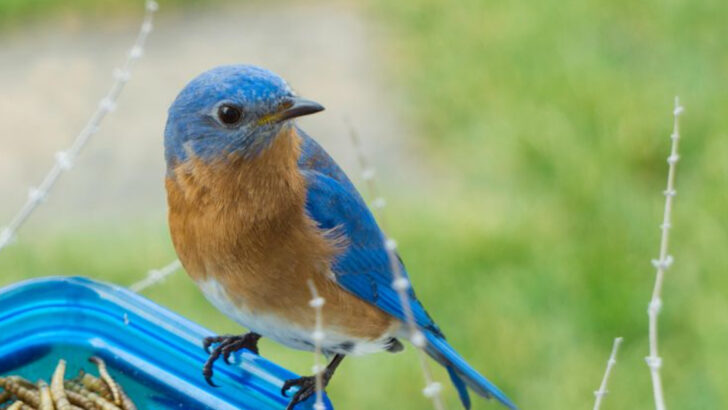Bluebirds are like flying drops of happiness—bright, cheerful, and always a welcome sight.
But getting them to stick around your yard takes more than just luck. These picky songbirds know what they like, and if your space checks the right boxes, they’ll show up in flocks.
It’s not just about food—bluebirds care about where they nest, how safe they feel, and whether your yard has the right kind of vibe.
With the right mix of simple changes, you can turn your yard into a bluebird magnet that keeps them coming back year after year.
Provide Nesting Boxes

Bluebirds are cavity nesters, making nesting boxes essential for attracting them. Choose a box with the right dimensions: 5×5 inches floor, 8 inches deep, entrance hole 1.5 inches. Place it 4-6 feet above the ground in an open area. Avoid perches to deter predators. Keeping the entrance away from prevailing winds offers additional comfort. Regularly check and clean the boxes to ensure they’re ready for new occupants. By providing a safe and appealing home, you’re more likely to welcome these delightful birds into your garden.
Incorporate Suet Feeders
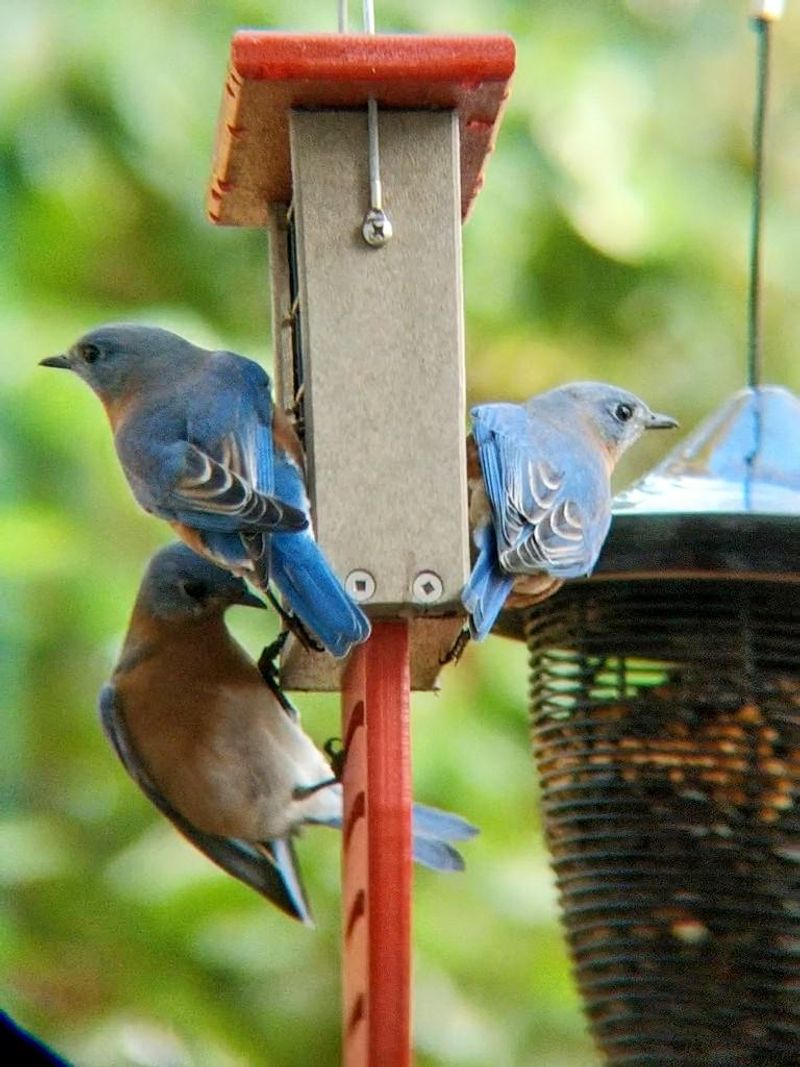
Incorporate suet feeders to provide a high-energy food source for bluebirds, especially in colder months. Suet is rich in fat, offering essential nutrients that help them thrive when insects are scarce. Install these feeders in open areas for easy access.
Ensure the suet mix is free of harmful additives. Bluebirds are attracted to mixed suet containing grains, seeds, and dried fruits. A delightful addition to any bird-friendly yard!
Did you know? Bluebirds may visit suet feeders more frequently during the early morning and late afternoon.
Avoid Pesticides
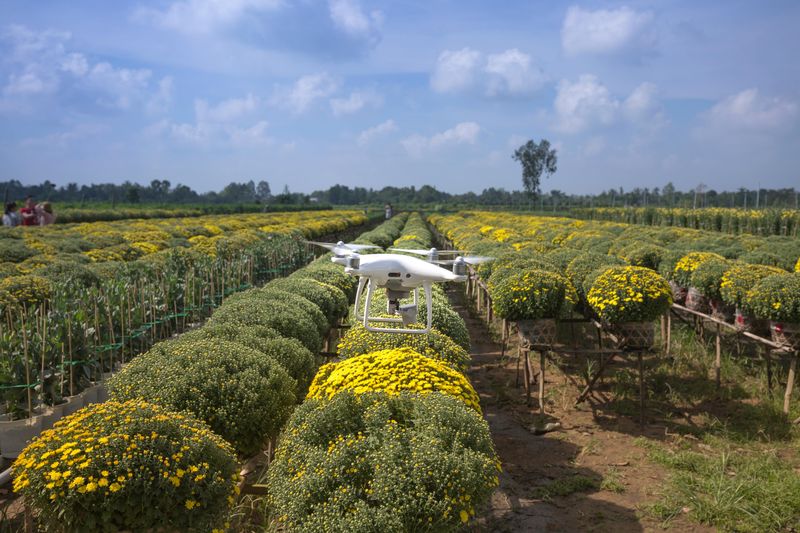
Maintaining a pesticide-free garden benefits bluebirds and other wildlife. Pesticides reduce insect populations, the primary food source for bluebirds. Opt for natural pest control methods like companion planting or introducing beneficial insects. This creates a thriving environment rich in biodiversity. A pesticide-free approach ensures a healthy food supply for adult bluebirds and their chicks. By committing to organic practices, you contribute to a safer, more inviting habitat for these birds.
Grow Colorful Wildflowers

Imagine a garden resplendent with a palette of wildflowers. These vibrant blooms are not just visually pleasing, but also attract small insects, which are bluebirds’ primary food source. By cultivating a variety of native wildflowers, you’re effectively setting a banquet for these feathered guests.
Consider incorporating species that bloom in succession, ensuring a continuous supply of insects. Not only do wildflowers support bluebirds, but they also contribute to a healthy ecosystem. An idyllic scene for any bird lover!
Fun fact: Bluebirds are known to prefer open fields dotted with wildflowers.
Offer Fresh Water
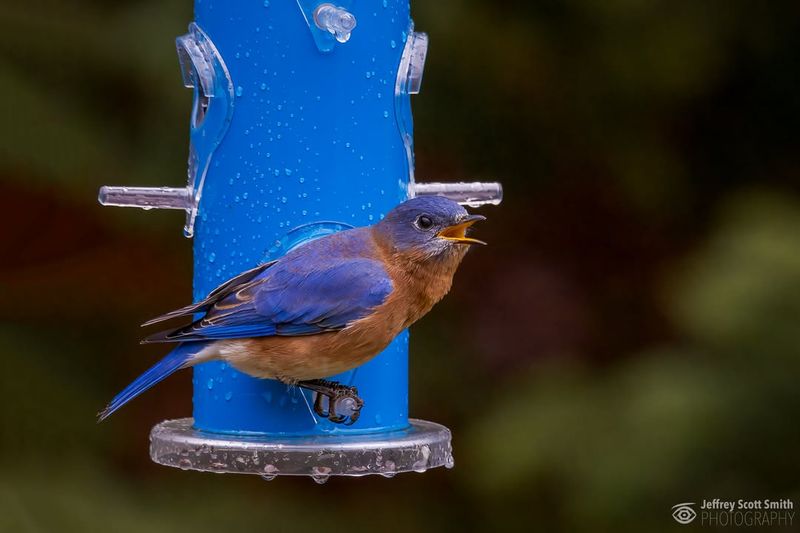
A reliable water source is a magnet for bluebirds. A shallow birdbath placed in a visible spot invites them to drink and bathe. Consider adding a solar fountain to create movement, which catches their attention. Change the water regularly to keep it fresh and mosquito-free. Position the birdbath near shrubs for quick escape routes from predators. The combination of water and safety encourages bluebirds to frequent your yard, providing endless joy as you watch them frolic.
Plant Native Berry-Producing Shrubs
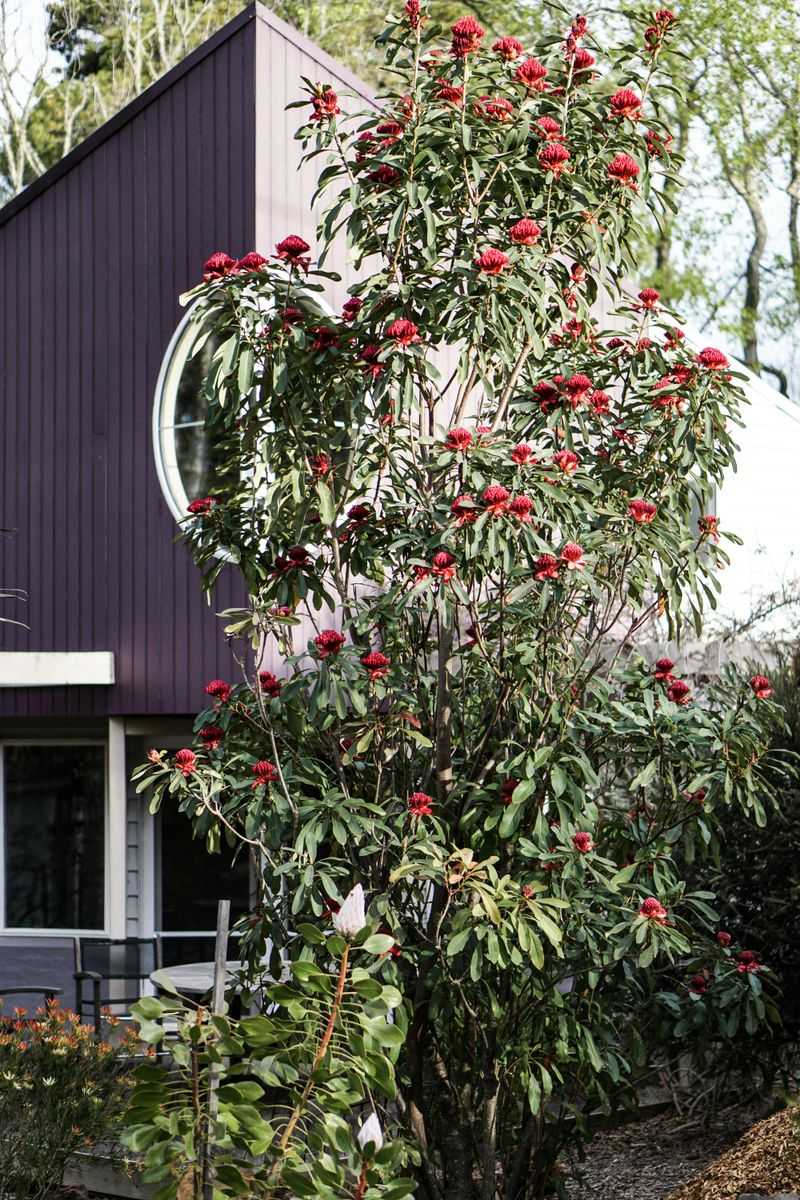
Native berry-producing shrubs are a natural food source for bluebirds. Plant varieties like elderberry, holly, and dogwood. These shrubs offer nutritious berries while supporting local wildlife. Space them around your yard to create a foraging-friendly environment. These plants not only attract bluebirds but also beautify your landscape with vibrant colors and textures. By choosing native species, you promote ecological balance, making your garden a haven for various bird species.
Install Perches
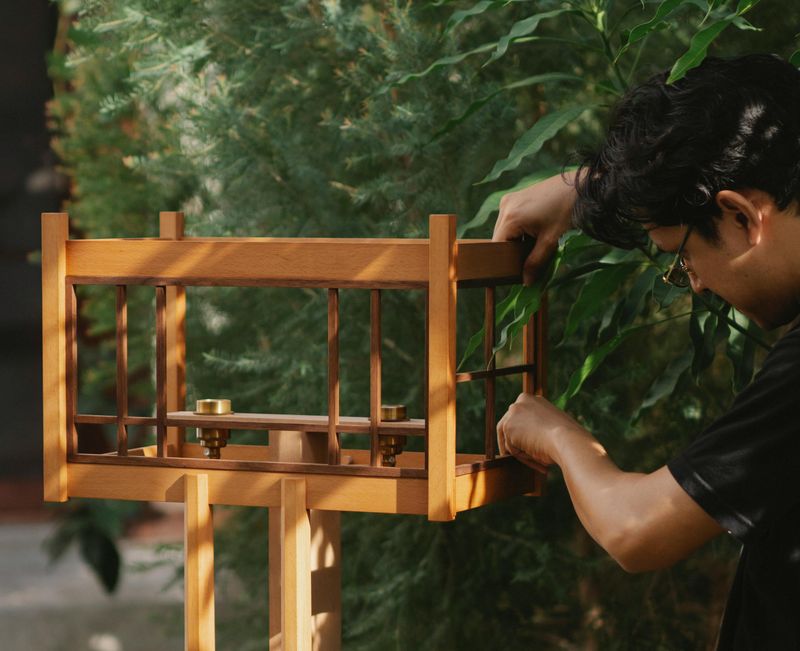
Perches provide bluebirds with vantage points for hunting insects and surveying their territory. Install tall poles or dead branches in open areas. These perches should be sturdy and well-placed to allow clear views of the surroundings. Space them out to cover different parts of your yard, enhancing hunting efficiency. With ample perching options, bluebirds feel more secure and are more likely to make frequent visits. This simple addition transforms your yard into a preferred stopover for these birds.
Create Open Spaces
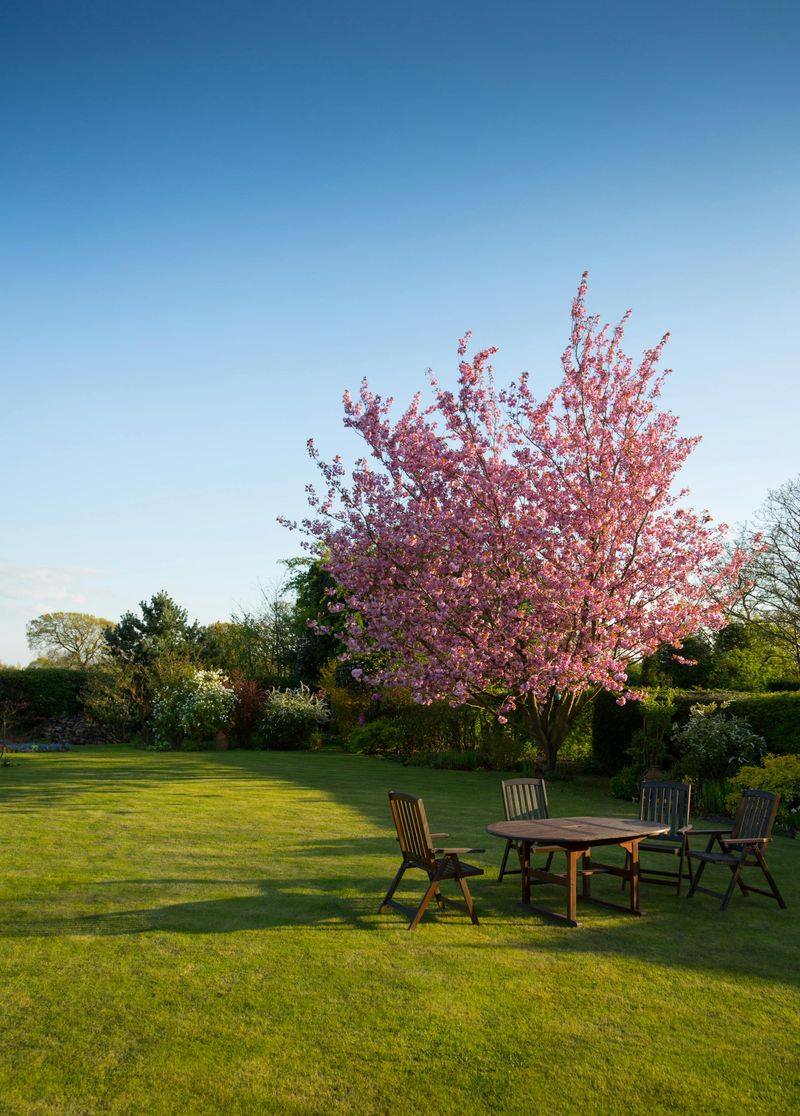
Bluebirds thrive in open spaces where they can spot insects easily. Maintain areas with short grass and few bushes. This setup mimics their natural habitat, encouraging them to forage. Keep trees and shrubs at the edges to provide shelter without obstructing the open area. By balancing open spaces with protective cover, you create a landscape that attracts bluebirds while catering to their natural behavioral patterns.
Provide Mealworms
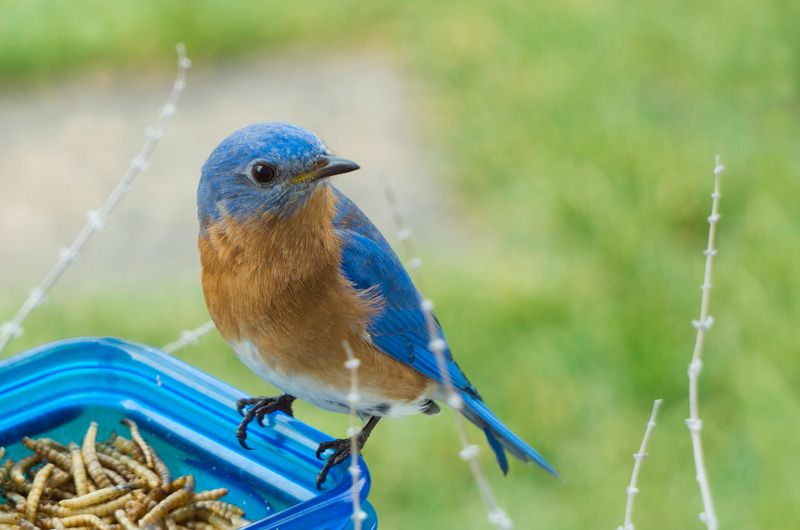
Mealworms are a nutritious treat that bluebirds can’t resist. Offer them in a shallow dish placed in an open, accessible spot. Live mealworms are preferable as they mimic natural prey, stimulating the bluebirds’ hunting instincts. Start with small amounts and gradually increase as they discover this reliable food source. Regular feeding fosters trust, encouraging repeated visits. This simple practice can make your yard a favored feeding ground for bluebirds.
Maintain Clean Feeders
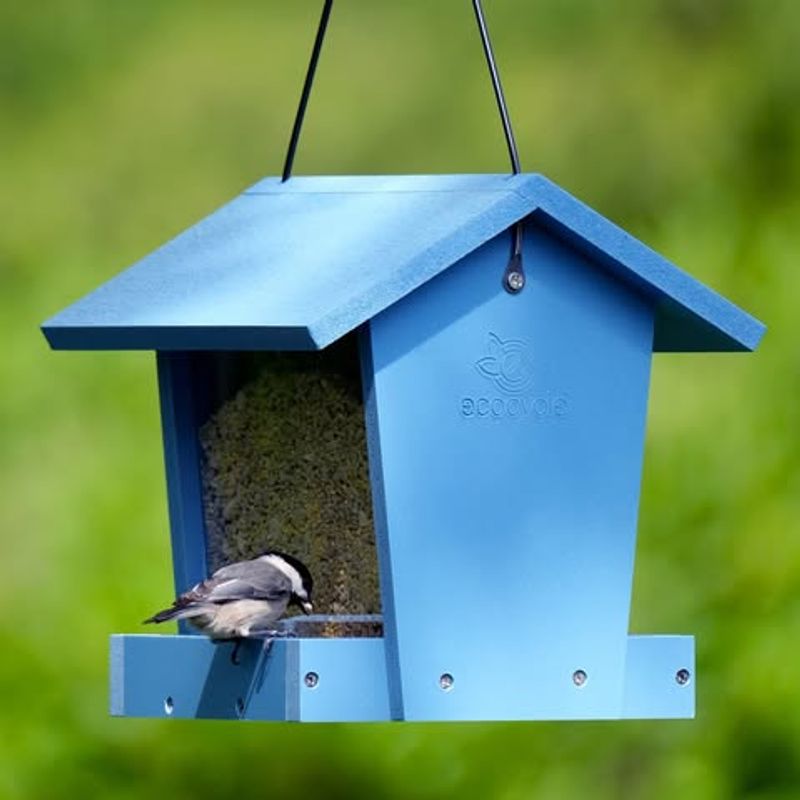
Clean feeders are crucial for attracting healthy bluebirds. Regularly empty and wash them with a mild bleach solution to prevent mold and disease. Place feeders in open areas away from dense foliage where predators might hide. Offer suitable feed like sunflower hearts or suet. Cleanliness ensures a safe feeding environment, drawing bluebirds to your yard. With consistent maintenance, you provide a nourishing and inviting space for these lovely birds.
Minimize Disturbance
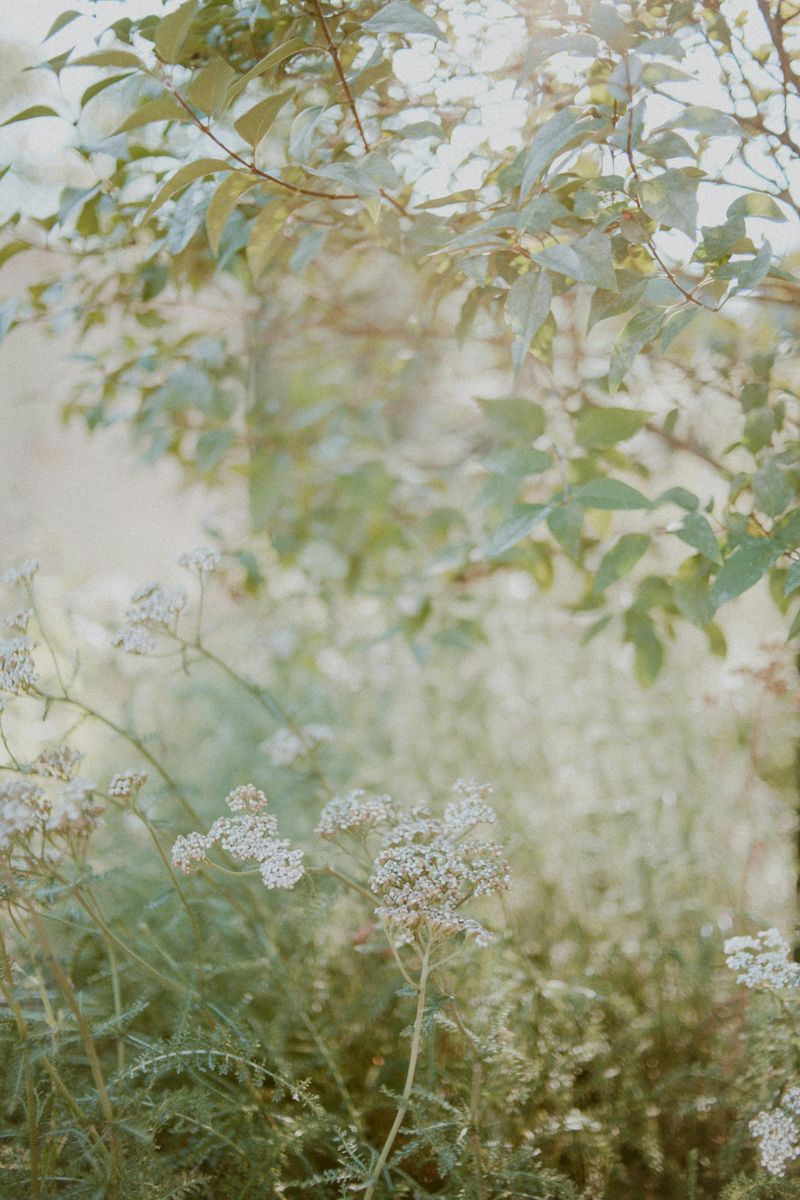
A tranquil yard appeals to bluebirds seeking a peaceful haven. Minimize loud noises and sudden movements. Position seating and pathways away from nesting and feeding areas. Create quiet zones with limited human activity to encourage bluebirds to settle. Discourage pets from roaming near their habitats. This mindful approach fosters an environment where bluebirds feel safe, increasing the likelihood of them visiting regularly. By respecting their need for calm, you enhance your garden’s allure.

